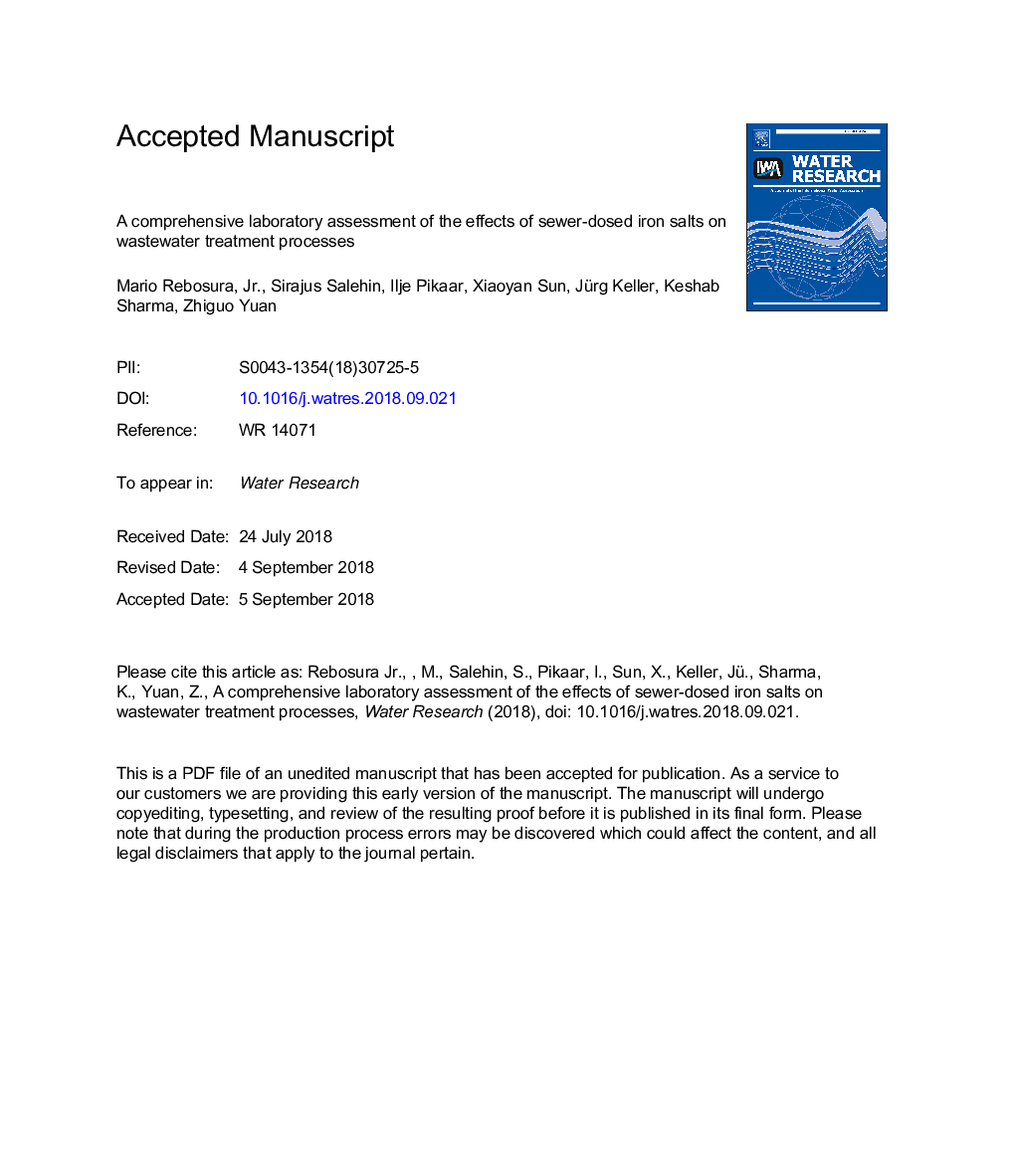| Article ID | Journal | Published Year | Pages | File Type |
|---|---|---|---|---|
| 9951504 | Water Research | 2018 | 37 Pages |
Abstract
The effect of iron-dosing in the sewer system, on wastewater treatment processes, was investigated using laboratory-scale wastewater systems comprising sewers, wastewater treatment reactors, sludge thickeners, and anaerobic sludge digesters. Two systems, fed with real domestic wastewater, were operated for over a year. The experimental system received ferric chloride (FeCl3) dosing at 10â¯mgFe Lâ1 in the sewer reactor whereas the control system received none. Wastewater, sludge and biogas were extensively sampled, and analysed for relevant parameters. The FeCl3-dosed experimental system displayed a decreased sulfide concentration (by 4.3â¯Â±â¯0.5â¯mgS Lâ1) in sewer effluent, decreased phosphate concentration (by 4.7â¯Â±â¯0.5â¯mgP Lâ1) in biological treatment reactor effluent, and decreased hydrogen sulfide concentration in biogas (911.5â¯Â±â¯189.9â¯ppm to 130.0â¯Â±â¯5.9â¯ppm), as compared with the control system. The biological nitrogen removal performance of the treatment reactor, and biogas production in the anaerobic digester were not affected by FeCl3-dosing. Furthermore, the dewaterability of the anaerobically digested sludge was enhanced by 17.7â¯Â±â¯1.0%. These findings demonstrate that iron-dosing to sewers can achieve multiple benefits including sulfide removal in sewers, phosphorus removal during wastewater treatment, and hydrogen sulfide (H2S) removal during biogas generation. Therefore, an integrated approach should be taken when considering iron salts usage in an urban wastewater system.
Related Topics
Physical Sciences and Engineering
Earth and Planetary Sciences
Earth-Surface Processes
Authors
Mario Jr., Sirajus Salehin, Ilje Pikaar, Xiaoyan Sun, Jürg Keller, Keshab Sharma, Zhiguo Yuan,
